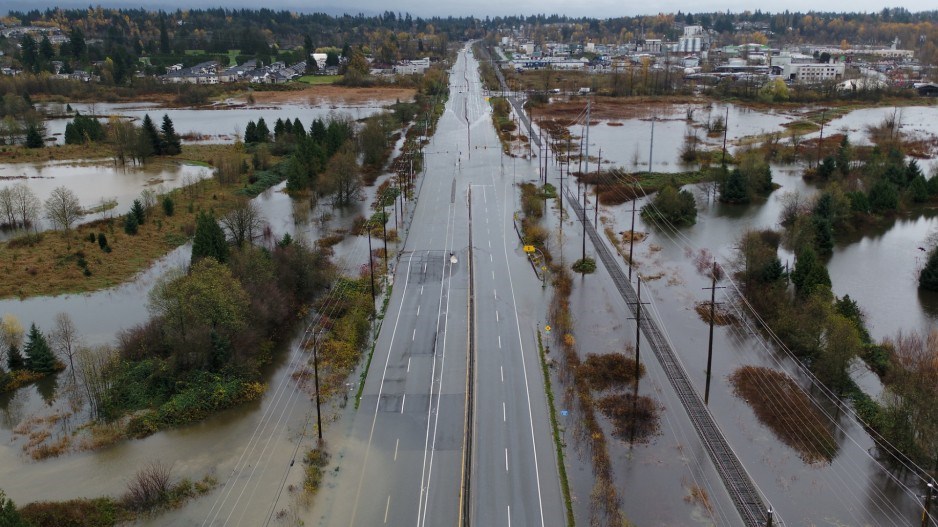B.C.’s positive economic outlook from this past summer is in for a revision within the next few weeks after recent mass storms pummelled the southern portion of the province, displacing people from their homes amid floods and choking off transportation corridors leading in and out of Vancouver.
“We're redoing our B.C. economic outlook right now and likely will shave some of the gross [domestic product] from it as a result of the floods going forward and then also the consequences of the floods,” said Greg D’Avignon, CEO of the Business Council of B.C., adding an updated forecast will likely be released in about two weeks.
“But the impact of that disaster … brings to the fore the importance of having safe, secure and efficient infrastructure and energy, and the ability to move goods and supplies in and out of — not just Metro Vancouver — but throughout the province and the rest of the country.”
The BCBC’s last economic forecast, released in August, saw the province’s GDP growing 5.8% this year — up from the 4.5% projected by the council back in February.
D’Avignon emphasized B.C.’s gateway economy is a massive boon not just for the province but for the rest of Canada and other parts of North America. With highways crippled as a result of floods and mudslides, the ensuing backlogs at ports and the reduced movement of goods through transportation corridors threatens more than just the provincial economy.
“Frankly, we are the economic corridor and engine for the rest of the country, and in some instances, the U.S. heartland. And so the port and airports are material around the economic prosperity of the country,” D’Avignon said.
And with fuel shortages already hitting some parts of the province, he’s urging stakeholders to engage in deeper conversations about creating more resilient supply chains and tapping more diverse forms of energy.
While some parts of the economy might experience sharp bounce-backs in activity as the province goes into economic recovery and begins repairing highways and rebuilding communities, D’Avignon noted it will come at the cost of government revenue at the same time revenue is being constrained amid a dip in economic activity.
“The other thing that is clearly here for a period of time is high levels of inflation we haven't seen for decades [and] we just haven't got the economic engine to grow wages about 5% or 6%. So people are going to get further behind and the cost of doing business and the cost of inputs has gone up dramatically,” he said.
“But countered against that, there's great opportunity if we can align our policies with what the world needs, which is low-carbon energy, new innovations and a low-carbon environment advancing really interesting sectors like the agro-tech sector [and] life sciences sector.”
Meanwhile, D’Avignon said he remains concerned about the state of both climate mitigation and infrastructure.
He’s calling on the government, the private sector and academia to collaborate on how to better address both geopolitical shocks to the economy as well as an increasing number of extreme weather events.
The BCBC’s August forecast described the economy as “close to firing on all cylinders.”
But returning to that position in the short term appears daunting amid disruptions to transportation and supply chains.
“The province’s export sector fared very well and it actually helped to dampen or minimize the downturn to the degree that was possible,” Ken Peacock, the BCBC’s chief economist, told BIV at the time.
“And along with that, related to the resource sector, was this inordinate amount of construction activity in large capital projects. That, too, provided a big lift.”
The previously projected 5.8% expansion of the economy still trailed the 6% growth pegged for Canada as whole. But B.C. did not lock down to the degree larger provinces like Ontario and Quebec did throughout the course of the pandemic, leaving less runway for the province to make up compared with much of the rest of the country.
Last year the Canadian economy contracted 5.8% compared with the B.C. economy, which shrank 3.8%.




